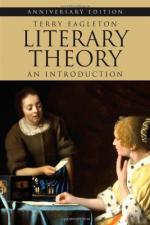
|
| Name: _________________________ | Period: ___________________ |
This test consists of 5 multiple choice questions, 5 short answer questions, and 10 short essay questions.
Multiple Choice Questions
1. According to Eagleton, why is Sigmund Freud's discussion of women problematic?
(a) Because of his troubling personal relationships.
(b) Because of his sexist and demeaning attitudes toward women.
(c) Because of his glorification of men in his work.
(d) Because of his refusal to discuss women in his work.
2. What are Northrop Frye's three recurrent patterns of symbolism in literature?
(a) Analogical, demonic, tragic.
(b) Tragic, comic, romantic.
(c) Comic, apocalyptic, romantic.
(d) Apocalyptic, demonic, analogical.
3. When did Sigmund Freud develop psychoanalysis?
(a) Late-twentieth century.
(b) Mid-twentieth century.
(c) Mid-nineteenth century.
(d) Late-nineteenth century.
4. What are the three points Eagleton notes about the method of structuralism?
(a) It is rational not idealistic; it accepts the obvious meaning of the text; and the content of the narrative is its structure.
(b) It is analytic not evaluative; it refuses obvious meaning of the text; and the content of the narrative is its structure.
(c) It is evaluative not analytic; it refuses obvious meaning of the text; and the narrative content is its meaning.
(d) It is idealistic not rational; it doesn't understand the obvious meaning of the text; and the narrative content is its meaning.
5. What is the root of the present crisis in literary studies, according to Eagleton?
(a) The definition of the subject.
(b) The subjugation of theory.
(c) The conflict over methodology.
(d) The inclusion of non-canonical works.
Short Answer Questions
1. What does Sigmund Freud call the first stage of sexual life?
2. According to Eagleton, structuralism has proved that there is nothing _____ about codes.
3. According to Eagleton, why is Shakespeare considered great literature?
4. What is the example Eagleton provides of a metalanguage, where one sign-system denotes another sign-system?
5. According to Eagleton, structuralism maintains that "individual units of any system have meaning only by virtue of" what?
Short Essay Questions
1. According to Sigmund Freud, what are the two conflicting principles that all people are motivated by and why is it significant?
2. What is structuralism's lasting impact on literary theory and what is Eagleton's critique of their methodology?
3. What are the three stages of development in psychoanalysis and how do they relate to literary theory?
4. How did post-structuralism develop and why is it significant?
5. Why does Eagleton argue that politics should engage with questions of sexual ideology?
6. How does Julia Kristeva view language and why is it significant?
7. Why does Eagleton claim that Northrop Frye's work emphasized the "utopian root'" of all literature and what is his response?
8. According to Eagleton, why should the notion of literary theory be abolished?
9. What was the significance of the Prague structuralists?
10. According to Eagleton, why should rhetorical science replace literary theory and what is its objective?
|
This section contains 856 words (approx. 3 pages at 300 words per page) |

|




